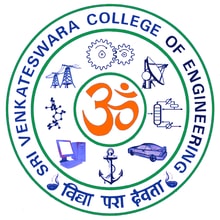CHEMICAL ENGINEERING
Chemical engineering is the type of discipline that influences numerous areas of technology. In broad terms, chemical engineers conceive and design processes to produce, transform, and transport materials — beginning with experimentation in the laboratory, followed by implementing the technology in full-scale production.
Chemical engineers are in high demand because of the large number of industries that depend on the synthesis and processing of chemicals and materials. Besides traditional careers in the chemical, energy, and oil industries, chemical engineers enjoy increasing opportunities in various other fields such as biotechnology, pharmaceuticals, electronic device fabrication, environmental engineering, etc. The unique training of the chemical engineer becomes essential in these areas when processes involve the chemical or physical transformation of matter.
For example, chemical engineers working in the chemical industry investigate the creation of new polymeric materials with important electrical, optical, or mechanical properties. This requires attention not only to the synthesis of the polymer but also to the flow and forming processes necessary to create a final product. In biotechnology, chemical engineers help design production facilities that use microorganisms and enzymes to synthesize new drugs. Problems in environmental engineering that engage chemical engineers include the development of processes (catalytic converters, effluent treatment facilities) to minimize the release of or deactivate products harmful to the environment.
To do these jobs, the chemical engineer must have a complete and quantitative understanding of both the engineering and scientific principles underlying these technological processes. This is reflected in the curriculum of the Chemical Engineering Department at SVCE, which includes the study of: –
Applied mathematics
Material and energy balances
Thermodynamics
Fluid mechanics
Energy and mass transfer
Separations technologies
Chemical reaction kinetics and reactor design
Process design.
These courses are built on a foundation in the sciences of chemistry, physics, and biology.
THE IMPACT OF CHEMICAL ENGINEERS ON OUR DAY-TO-DAY LIFE
Chemical engineers have been improving our wellbeing for more than a century. From the development of smaller, faster computer chips to innovations in recycling, treating disease, cleaning water, and generating energy, the processes, and products that chemical engineers have helped create touch every aspect of our lives. Not just these, they have even achieved in various other fields such as bold innovators, new frontiers in the areas of energy, the environment, biomedicine, electronics, food production, materials, etc.
CHEMICAL ENGINEERING TOUCHES EVERYTHING
It would take too long to list all the products that are impacted by chemical engineers, but knowing what type of industries employ them may help you comprehend the scope of their work. Chemical engineers work in manufacturing, pharmaceuticals, healthcare, design and construction, pulp and paper, petrochemicals, food processing, specialty chemicals, microelectronics, electronic and advanced materials, polymers, business services, biotechnology, and environmental health and safety industries, etc.
THE IMPORTANCE OF MATH AND SCIENCE IN CHEMICAL ENGINEERING
Within these industries, chemical engineers rely on their knowledge of mathematics and science—particularly chemistry — to overcome technical problems safely and economically. They draw upon and apply their engineering knowledge to solve various technical challenges that we encounter. Don’t make the mistake of thinking that chemical engineers only “make things,” though. Their expertise is also applied in the areas of law, education, publishing, finance, and medicine, as well as in many other fields that require technical training.
WHAT ARE THE SPECIFIC JOB FUNCTIONS OF CHEMICAL ENGINEERS?
Specifically, chemical engineers improve food processing techniques, and methods of producing fertilizers, to increase the quantity and quality of available food.
- They also construct synthetic fibres that make our clothes more comfortable and water-resistant.
- They develop methods to mass-produce drugs, making them more affordable.
- They create safer, more efficient methods of refining petroleum products, making energy and chemical sources more productive and cost-effective.
- Chemical engineers also develop solutions to environmental problems, such as pollution control and remediation.
They process chemicals, which are used to make or improve almost everything we see around us.
DUTIES OF CHEMICAL ENGINEERS
Chemical engineers typically do the following:
- Conduct research to develop new and improved manufacturing processes.
- Develop safety procedures for those working with potentially dangerous chemicals.
- Develop processes to separate components of liquids and gases or to generate electrical currents using controlled chemical processes.
- Design and plan the layout of the equipment.
- Do tests and monitor the performance of processes throughout production.
- Troubleshoot problems with manufacturing processes.
- Evaluate equipment and processes to ensure compliance with safety and environmental regulations.
- Estimate production costs for management.
- Some chemical engineers specialize in a particular process, such as oxidation (a reaction of oxygen with chemicals to make other chemicals) or polymerization (making plastics and resins). Others specialize in a particular field, such as nanomaterials (making extremely small substances), biological engineering, or in developing specific products.
Chemical engineers also work in producing energy, electronics, food, clothing, and paper. They work in research in life sciences, biotechnology, and business services.
Chemical engineers must know all aspects of the manufacturing of chemicals, drugs, or other products. They must also understand how the manufacturing process affects the environment and the safety of workers and consumers.
Chemical engineers face many of the same challenges that other professionals face, and they meet these challenges by applying their technical knowledge, communication, and teamwork skills; the most up-to-date practices available; and hard work. Benefits include financial reward, recognition within industry and society, and the gratification that comes from working with the processes of nature to meet the needs of society and community.
SOME OF THE PLACES WHERE CHEMICAL ENGINEERS ARE IN DEMAND
Chemical Engineers are in demand at various places such as:
Mineral-based industries
Petrochemical plants
Synthetic fiber units
Petroleum refining plants
Chemical industries
Refineries
Pharmaceutical companies
Paint manufacturers
Fertilizer industry
Textiles sector
Plastics and
Explosives
SCOPE OF CHEMICAL ENGINEERS IN INDIA
Scope of Chemical Engineering in India is growing as research organizations, laboratories, defense establishments, atomic power plants, and forensic investigation departments also need chemical engineering experts. The Department of Biochemical Engineering is often seen as one of the most popular sub-branches of Chemical Engineering. Other sub-areas that attract engineering students with alluring career prospects are Nanotechnology and Environmental Engineering.
THE TYPES OF INDUSTRIES FOR CHEMICAL ENGINEERS
Chemical engineers work in manufacturing, pharmaceuticals, healthcare, design and construction, pulp and paper, petrochemicals, food processing, specialty chemicals, microelectronics, electronic and advanced materials, polymers, business services, biotechnology, and environmental health and safety industries. It has been observed that most students, especially girls, who choose Chemical Engineering as their core discipline, generally drift to Biotechnology, Nanotechnology, and Environmental Engineering during their specialization phase. Among the conventional Chemical Engineering streams, there are Ceramics, Chemical Processes, Electrochemical Processes, Molecular Chemistry based fields, Fertilizers & Pesticides, and Plastics & Polymers that are still in vogue.
TEN JOB TITLES OF CHEMICAL ENGINEERS
Chemical engineers can be hard to identify, not just because most people aren’t clear about what chemical engineering actually is, but because chemical engineers rarely can be identified by the job title – chemical engineer!
To help dispel this confusion, we have compiled a list of ten titles of various job opportunities in chemical engineering, that chemical engineers typically fill:
Process engineer
Chemical engineers often describe themselves as process engineers. Although Process engineering occurs throughout the full range of chemical engineering sectors, a process engineer will typically work to design engineering packages, develop new ideas and processes, and monitor and maintain plant systems.
Fire and explosions engineer
Chemical engineers are extremely focused on improving and maintaining process safety. The ability to design and implement fire and explosion protection systems is imperative in ensuring public and industrial safety. A fire and explosions engineer will work to prevent, control, and mitigate the effects of fire and explosions, such as in the oil and gas industry.
Biochemical engineer
Biochemical and chemical engineering are part of the same family. Biochemical engineering is a rapidly developing and growing research area, which is being seen as increasingly important. Biochemical engineers are responsible for tackling many of the world’s problems, such as stem cell therapy to cure illnesses and biofuels made from algae to provide more sustainable energy sources. They do this by translating life science discoveries into materials and processes that contribute to our wellbeing.
Blast furnace supervisor
Chemical engineers who work as blast furnace supervisors are responsible for the development and application of new technologies, processes, and design improvements to furnace operations. Furnace engineers are accountable for leading equipment installations and major repairs for plants. To work in this position, you need to be detail orientated to ensure project success.
Food hygiene engineer
Many chemical engineers work in the food industry, but only a few of them are actually called chemical engineers. One of the main reasons behind this is that the public mainly gets put off by the idea of chemicals and food together. But we should be thankful as these Food hygiene engineers are the reason why we eat healthy foods as they work day and night to ensure that the food we eat is safe and free from contaminants.
Pharmaceutical engineer
These are the chemical engineers who work in the pharmaceutical industry. The pharmaceutical industry is reliant on chemical engineers to help develop and manufacture new products and processes. Without pharmaceutical engineers, it would be impossible to have a successful development and large-scale production of many lifesaving products. The ability to apply chemical engineering practices to drug production not only makes the process more efficient but saves money, thus producing lower-cost pharmaceuticals.
Continuous improvement engineer
While most of the chemical engineers consider themselves to be continuous improvement engineers, however, some of them specialize in being able to innovate and consistently improve the overall efficiency of a process. All a chemical engineer needs is to excel at identifying problems and solutions as well as spotting issues before they happen.
Thermo-fluid engineer
A Thermo-fluid engineer must have specialist knowledge of thermodynamics and be able to draw on the basic sciences of fluid mechanics, complex fluids, biomechanics, heat transfer, and energy studies. Thermo-fluid engineers can work to analyze how particles interact and use this to improve processes like low-carbon energy production.
Design authority
A Design authority is a person (or group of people) who has the vision and who knows how a project must proceed. Design authority engineers also have the power to make binding decisions. To do this job, you need to have a high level of professional knowledge and chemical engineering skills to make the best choices. As a design authority, you have the power to settle discussions and implement decisions daily.
WHY CONSIDER CHOOSING CHEMICAL ENGINEERING AT SVCE?
- The Department of Chemical Engineering came into existence in 1994 and got accredited by the National Board of Accreditation (NBA) in the year 2005.
- The Department of Chemical Engineering has a Centre for Research since 2011 onwards.
- The research centers and focus areas are Mixing, Hydrotropes, Solar Drying, Environmental Technology, Process Control, Automation of Fuel Cell, Membrane Separation, WasteWater Treatment, Biofuel Technology, Food Processing Technology, Bioprocess monitoring and control, Fluidization Engineering, Computational Fluid Dynamics, Electrochemical Process, Corrosion, and Advanced Oxidation Process.
- The students of the department have been consistently securing top ranks in Anna University since inception.
- MoU signed with Central Leather Research Institute, SPIC, Malkolak Knowledge Centre, Thirumalai Chemicals, Phycospectrum Environmental Research Centre, ABAN INFRASTRUCTURE LTD Manali Petrochemical Ltd, Chennai, Tuticorin Alkali Chemicals & Fertilizers Ltd, Tamil Nadu Petroproducts Ltd (TPL), INDCZECH Engineering Pvt.
- The department has lots of sophisticated laboratories and facilities funded by government agencies and corporates like Process Control Laboratory, Chemical Reaction Engineering Laboratory by AICTE, Heat Transfer Laboratory by CTS, 3D Printing Facility, interdisciplinary Nano Research Centre facilities, etc., that are available for students to pursue research in emerging technologies.
- Consultancy is provided to top companies like Tata Chemicals, SPIC, etc.
- The department has received an external research grant over 3.00 crores in the last few years from DST, SERB, IGCAR, MSME, CTS, AICTE, etc.





